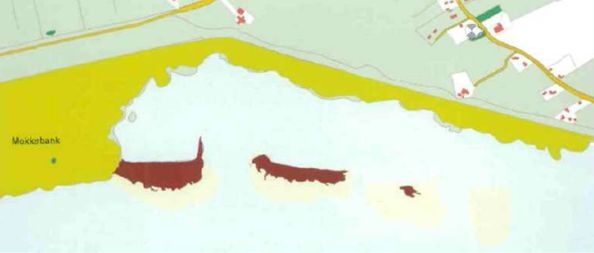Construction
In 1993, four emerging sand banks were built along the Frisian IJsselmeer coast. Their orginal height varied between NAP + 0,20 m and NAP – 0,20 m. In total, 120,000 m3 of sand was deposited in the area.
Project delivery

Over a four-year period, the sand bars were flattened and lost height. The three westernmost ones, the highest and the least dynamic, moved as expected in northern direction towards the coast. The lowest and most exposed easternmost bank totally disappeared in 2007; its sand has most probably been transported eastwards. One of the reasons for the disappearance of the easternmost sand bank is the almost constant water level in the IJsselmeer; a relatively large part of the wave activity due to the predominantly southwesterly winds is therefore concentrated on a small part of the outer profile of the bank, thus causing concentrated erosion.The experiment at the Mirnserklif was perceived as quite successful. This is partly due to the specific properties of this location, in a sheltered area close to the mainland. This is important for the local transport and sedimentation in between the sand banks and for the development of the coast and new reedland.
